Forging Coherency :
/ The Path from Photojournalism to FashionPhotography /
An Interview with
Jean-François Campos
(Nov 9, 2006)
PART 1/
From Photojournalism to Fashion Photography An Interview with Jean-François Campos
A series of fashion images in Poster magazine by Jean-François Campos aroused our interest. Action-packed modern chic combines with a classical otherworldly airiness to form images that are full of fragility, melancholy, suspense, and beautiful strangeness. A quick Google search revealed that he is represented by the Michele Filomeno agency, an agency that has offices in Paris, Milan, and New York. Michele Filomeno was founded by the eponymous Italian agent 25 years ago, who also happens to have Peter Lindbergh and Javier Vallhonrat on his list of photographers. Although Campos has been doing fashion work for barely more than two years, he is no novice in the art of image making. He was in fact a quite successful prize-winning photojournalist for nearly 15 years, and this clearly comes across in his fashion shoots in the style of “candid” street photography. What prompted a well-known photojournalist, who is supposed to be concerned with the tragic conditions of mankind (he was a war photographer, among other things), to enter the glamorous and ephemeral world of fashion? And how did it all happen? We called Filomeno’s Paris office to set up an interview with Campos, expecting the meeting to provoke more questions than answers.
After several phone calls back and forth, Campos’ booker and manager Alessandro responded positively, granting us an appointment at the Agency’s Paris office in an early afternoon. The address is none other than the legendary Rue de la Paix in the 2nd arrondissement. This interview took place in French –
Disillusion with photojournalism: I wanted to tell stories that were more intimate, personal
Photographie.com: Your biography shows great diversity in photography. Would you say today that you have left photojournalism behind for good?
J-F: “It’s photojournalism that has left me.” He pauses before qualifying this: “Photojournalism is a passion, not a career. We live vicariously, through others. I did photojournalism with enormous passion, and I learned an enormous amount of things: about myself, about photography. I was quite young when I started out, and photojournalism allowed me to discover the world through photographing others. But slowly, I began to be more preoccupied by myself than by the lives of others. I had the myth of the concerned photographer in my head, the mythical engagement exemplified by Gilles Caron or James Natchtwey. And at one point, my personal photographic vision did not correspond to that myth. Slowly, I became aware that I was unhappy in photojournalism, becoming more and more detached from what I was doing. I became more concerned by the intimate and the personal than by the lives of the others. It’s a profession where we cannot lie, neither to ourselves nor to others. I had to go out to the field and cover important events in a thorough manner, and I had more and more difficulty leaving home, or picking up the phone for assignments.”
This all came to you slowly?
J-F: “In the last few years. I’ve been in the profession since 1988, ‘89, so it’s been about 15 years or so? - Sorry, I’m very bad with numbers. In the last few years, I had come to the realization that I did not correspond to the idealized vision that I had of a concerned photojournalist (I’m an idealist). When I see Stanley Greene, who was my colleague at Agence VU’, I was very impressed by his energy, his passion, his desire to witness the lives of others, and I just couldn’t be that witness anymore. I also remember working alongside James Nachtwey in Northern Ireland in the middle of a war. There was a lot of shelling at one point and I ducked. When the shelling was over, I looked behind, and Nachtwey hadn’t moved an inch. That was when I started questioning the authenticity of my intentions. I think that when we do photojournalism of this kind of intensity, there has to have been a personal ‘wound’ in the past that propels one to implicate oneself, to witness first-hand, and I was not like that. I was too furtive, too subjective, and not a very good journalist. It took me time, but I slowly stopped. There’s no greater difficulty than stopping a profession that we succeed at, especially at that age: I was 33 when I started asking myself all these questions. I realized that I wasn’t meant to be the storyteller of other people. I wanted to tell stories that were more intimate, more personal.”
From advertising to fashion: the search for an expressive voice
What did you do when you stopped photojournalism?
J-F: “I stopped photography completely for a year to be close to my son, who was just born. I didn’t want to continue. I felt like that I didn’t have any stories to tell anymore and that something was broken - I was done with photojournalism. But then I started missing photography terribly. I took out a piece of paper and wrote down what I wanted and didn’t want.”
The tried-and-true technique!
J-F: “Yes, pen and paper. I realized that I wanted to actually enjoy making images, to work with a team, and to come out of the idea of suffering that I perceived in photojournalism, that anyway has become a suffering for me. That’s when I decided to do advertising photography for about one year and half, two years.”
Was it relatively easy to get into advertising with your previous photographic experience?
J-F: “Yes. At the end of my photojournalism career, I started photographing in large format and in color, which was much more marketable for advertising stuff. I also had an agent. It’s much easier to be represented by someone who has all the connections to the clients and who can bring jobs to you.”
Is this when you left the Agence VU’?
J-F: “I left VU’ when I stopped photojournalism, right before my one-year sabbatical. They still manage my archives, but from that moment on, I wasn’t available for assignments anymore.”
So initially, it wasn’t the attraction for fashion that prompted you to give up photojournalism?
J-F: “Well, I always liked fashion photography since when I was a kid. I liked press photography. I liked photography in general. I wanted to be a photographer when I was 6 year old. I have always been obsessed by the recording of the past - to note, to record, to photograph. There were two figures that guided me when I was a kid: Peter Lindbergh and Raymond Depardon – I think everybody has figures that guide their lives - more by their attitude than their photography. I saw Depardon on the television, and I wanted to become Depardon, and that’s how I became a photojournalist. And today, I think I’m fulfilling the second part.
How was the advertising stint?
J-F: “Very nice! I did campaigns for BNP (the French national bank), BMW, all the service industries. But very quickly, I realized that something was missing. A deeper fulfillment, a more personal way of expressing myself - I don’t like to use the word artistic. At the end, I was doing campaigns for Printemps (an important fashion department store in France). I started doing castings, using make-up artists, and of course, what’s supposed to happen happens, and I remembered that I wanted to be fashion photographer when I was a kid. At this moment I decided to stop advertising photography…”
Do you always feel the need to stop something completely before moving on to something else?
J-F: “I’m very obsessive – it’s all or nothing. When I decide to do something, I have to put in 800%. And when I found out that I was really attracted to fashion, I had to pursue it. I’ve always had an attraction for fashion, but I remember that when I was a photojournalist, whenever I talked about my interest in fashion, it was always met with disdain, as photojournalists didn’t take fashion photographers very seriously. If we were to talk to a fashion photographer about a photojournalist, he will have a look of admiration in his eyes. However, if we were to talk to a photojournalist about a fashion photographer, he would show total disdain. I’ve always found that irritating, because some of the greatest photographers of the (last) century – Irving Penn, Richard Avedon, were great fashion photographers. Guy Bourdin was a great fashion photographer…”
And William Klein?
J-F: “Yes, and William Klein, who supposedly did it for money, and who had revolutionized the pages of Vogue… I don’t like classifications. I like a lot of things in photography, be it Gursky, or Annette Messager, or Depardon, or Nachtwey, and I respect all ways of implicating oneself with images as long as there is sincerity.”
On your website, we see your photographs of fashion. But I haven’t seen your press photographs.
J-F: “Well, today I am a fashion photographer, and that’s what the website represents me as. But I don’t really see a break between what I did in photojournalism and what I am doing in fashion. In photojournalism, the moments are stolen, whereas in fashion, they are carefully constructed.”
How does the construction of a story take place? Do you do a storyboard?
J-F: “Well, it begins with an idea, an obsession. I have stories in my head that haunt me. We begin with a theme in clothing. That could be the color black or transparent, and I work as a duo with the stylist to tell a story inspired by a collection of clothes.” Which stylists do you work with? J-F: “For the moment, the stylist is not yet defined. It depends on the affinities that develop.” (Apparently, as Alessandro clued me earlier, Filomeno prescribes discretion in all matters concerning Jean-François’s fledgling fashion career with the agency).
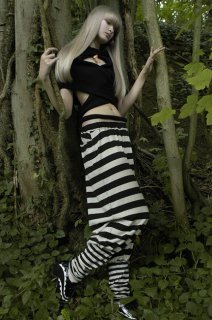 B (01).jpg156.2 KB · Views: 18
B (01).jpg156.2 KB · Views: 18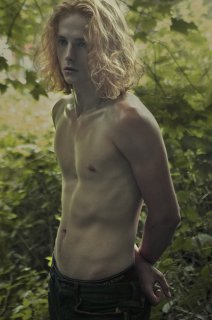 B (02).jpg93.8 KB · Views: 12
B (02).jpg93.8 KB · Views: 12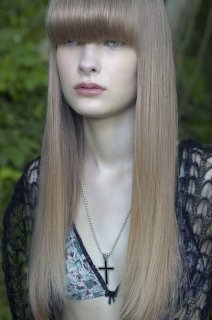 B (03).jpg102.1 KB · Views: 14
B (03).jpg102.1 KB · Views: 14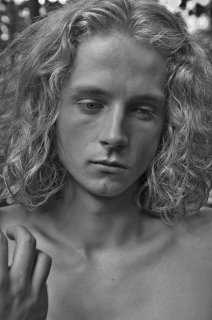 B (04).jpg109.9 KB · Views: 6
B (04).jpg109.9 KB · Views: 6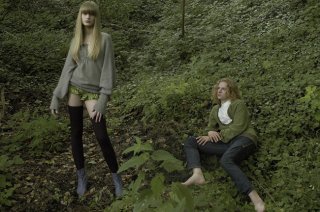 B (05).jpg174.4 KB · Views: 15
B (05).jpg174.4 KB · Views: 15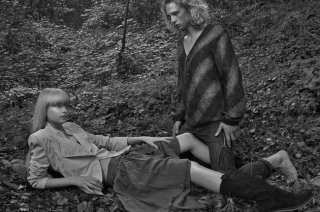 B (06).jpg147.6 KB · Views: 9
B (06).jpg147.6 KB · Views: 9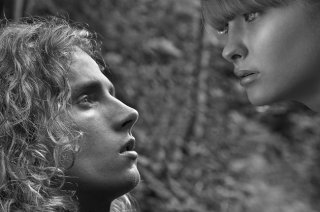 B (07).jpg96.9 KB · Views: 10
B (07).jpg96.9 KB · Views: 10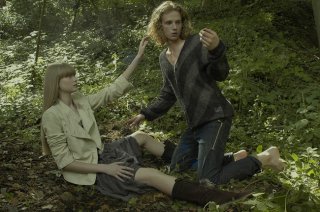 B (08).jpg170 KB · Views: 11
B (08).jpg170 KB · Views: 11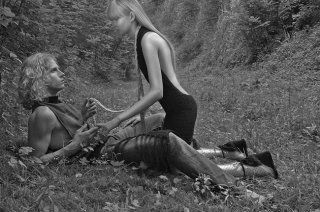 B (09).jpg158.6 KB · Views: 10
B (09).jpg158.6 KB · Views: 10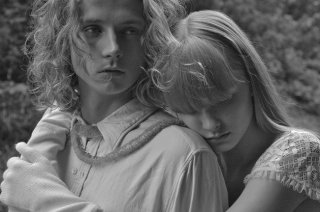 B (12).jpg101.5 KB · Views: 8
B (12).jpg101.5 KB · Views: 8



 In the first couple photos they look like elves, and in the ones where they are together like two innocent children.
In the first couple photos they look like elves, and in the ones where they are together like two innocent children.















 . It really irks me I'm no longer able to find some examples of his photojournalism era.
. It really irks me I'm no longer able to find some examples of his photojournalism era. 


























